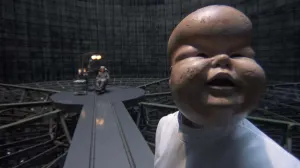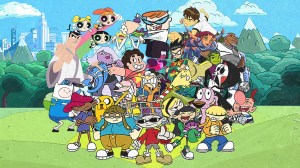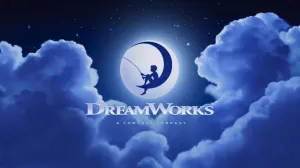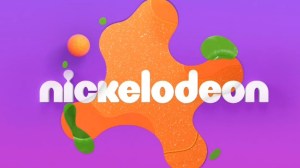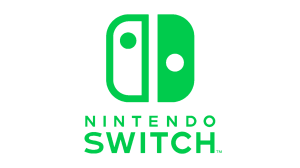Patrick Stewart returned to his role as Captain Jean-Luc from Star Trek: The Next Generation in the premiere episode of Star Trek: Picard on CBS All Access. While the episode charts a new course for Picard following his departure from Starfleet and breaks with many of the tropes and aesthetic choices of The Next Generation, the episode still has plenty of callbacks, Easter eggs, and references to Picard’s Next Generation adventures.
Videos by ComicBook.com
Here we’ve gathered up those nods with some background information about what they mean and where they come from. Keep reading to see what we noticed and why it matters.
The first episode of Star Trek: Picard is titled “Remembrance.” It’s one of three directed by Hannelle M. Culpepper. You can read our review of all three of those episodes here.
Are you excited to see more Star Trek Easter eggs in Star Trek: Picard? Let us know in the comments.
New episodes of Star Trek: Picard become available to stream Thursdays on CBS All Access.
Disclaimer: ComicBook.com is owned by ViacomCBS.
The Poker Game
The episode opens with a dream sequence that takes place in a familiar setting. We see an exterior shot of the USS Enterprise-D, the ship that was the setting of Star Trek: The Next Generation. Inside, we see Picard and Data playing poker in Ten-Forward, the bar on the ship that was run by Picard’s old friend Guinan.
Data is wearing the gray Starfleet uniform introduced in the film Star Trek: First Contact. That uniform was never used aboard the Enterprise-D as the ship was destroyed in the first Next Generation movie, Star Trek Generations. It’s debut in First Contact came alongside the debut of the Enterprise-E. We’d chalk up it appearing on the Enterprise-D here as dream logic.
That there playing poker is important. The Enterprise’s senior officer had a regular poker game going, but Picard did not participate in it until the series finale episode, “All Good Things.”
This is also the first of three moments where Picard mentions his signature drink, earl gray tea, in the episode.
Blue Skies

Bing Crosby’s rendition of “Blue Skies” plays over the scene. Data sang a version of this song at Will Riker and Deanna Troi’s wedding in Star Trek: Nemesis.
Later, after he attempted to download his memories into B-4, the prototype android began humming the same song.
Five Queens?
This is less an Easter egg and more fan theory fodder. When Data shows his hand, he’s holding five queens. Besides being impossible with a standard deck of playing cards, some fans are reading two possible theories into this. One is that Data holding queens is a reference to the Borg Queen, the villain of Star Trek: First Contact.
The other reading is that the queen part isn’t as important as the “Q” in the corner of the cards, suggesting that the nigh-omnipotent being Q is somehow involved in the plot of Star Trek: Picard. Q was a character that book-ended Star Trek: The Next Generation, appearing in the show’s pilot episode and again in its finale (with several appearances between). He sees Picard as his foil and would be well-suited for an appearance in the new Star Trek series focused on the character of Picard rather than the ship he once commanded. We’ll see if either of these theories have any bearing as the series continues on.
Château Picard

When Picard awakens, he’s at Château Picard in La Barre, France. This is his family’s vineyard, and his brother, Robert, ran it for years while living there with his family.
During the events of Star Trek Generations, Picard received a message telling him that Robert and his son, Rene, had died in a fire at the vineyard. It seems the vineyard has been restored since then.
Daystrom Institue
In our introduction to Dahj, she mentions that she’s been accepted into the Daystrom Institute. Picard later travels to Okinawa, Japan to visit the Institue and meets with Dr. Agnes Jurati.
The institute is mentioned several times in Star Trek: The Next Generation and its spinoff shows. The institute is named after Doctor Richard Daystrom, the scientist who invented the duotronic computer in the Star Trek: The Original Series episode “The Ultimate Computer.”
The Inner Light Flute

The show’s opening theme begins with the sound of a flute before adding more instruments. Series composer Jeff Russo (who also works on Star Trek: Discovery) confirmed in a featurette shown during The Ready Room that this flute is meant to be a callback to the Ressikan flute that Picard acquires and learns to play in the Star Trek: The Next Generation episode “The Inner Light.”
Laris and Zhaban
We soon learn that Picard, in his retirement, is tended to by two Romulan aides, Laris and Zhaban. That Romulans are living openly on Earth is a sign of how much the Star Trek universe has changed since the events of Star Trek: Nemesis.
To learn more about Picard’s relationship with Laris and Zhaban, check out the Star Trek: Picard – Countdown prequel graphic novel.
The Romulan Supernova

A lot about Picard’s life since Nemesis is revealed in the interview that broadcasts on Federation feeds. Most of the discussion revolves around the destruction of Romulus after the planet’s sun went supernova. This event is referenced in 2009’s Star Trek movie, though this is the first confirmation that is was Romulus’ own sun that went supernova and provides some additional insight into the backstory of Nero, the film’s villain.
Past Images
As the interview begins, several shots of Picard’s history are shown as the reporter introduces the retired admiral. One is from the Star Trek: The Next Generation episode “Sins of the Father,” with Worf standing by Picard’s side.
The others are productions stills taken during the Next Generation crew’s time making movies. The one of Picard in his white dress uniform looks like it is from Star Trek: Insurrection.
Utopia Planitia

The interview mentions an attack by rogue synthetics on Mars that set the planet’s atmosphere ablaze and destroyed the Utopia Planitia Shipyards. The Enterprise-D was built at the Utopia Planitia Shipyards, and it’s was a major production plant for the Federation. Its destruction is part of the Star Trek: Short Treks episode “Children of Mars.”
The Star Trek: Picard — Countdown comics reveal that Geordi La Forge was in charge of the shipyard while it was building ships for Picard’s rescue fleet. The destruction of the shipyard is the reason the Federation backed out of its plans to relocate the Romulans ahead of the supernova.
Dreams of Data
Picard dreams of Data again. This time they’re both in the Starfleet uniforms they wore on the Enterprise-D from the third season of Star Trek: The Next Generation through Star Trek Generations.
Data is painting, a hobby of his that pops up in several episodes of Star Trek: The Next Generation.
Starfleet Museum

Picard visits his archive at the Starfleet museum and it is packed with Easter eggs. We can see a Klingon bat’leth and ceremonial dagger, either given to him by Worf or acquired during one of Picard’s many diplomatic interactions with the Klingon Empire. There are models of several of Picard’s ships, including the USS Stargazer, the USS Enterprise-E, and the Enterprise-E’s Captain’s yacht, the Cousteau, which appeared in the film Star Trek: Insurrection.
There’s also the banner that the kids aboard the Enterprise-D made for Captain Picard Day in the Next Generation episode “The Pegasus.” The banner was a topic for discussion during the first episode of The Ready Room.
Data’s Daughters
Picard confirms that Data titled the painting resembling Dahj “Daughter.” Data once built a daughter named Lal in the Star Trek: The Next Generation episode “The Offspring.”
Lal was even more advanced than Data but suffered a cascade failure leading to her death. Before she died, Data uploaded her memories and experiences to his own system to carry a part of her with him forever.
B-4

When Picard visits the Daystrom Institute, Dr. Jurati shows him B-4 disassembled in a drawer. The Enterprise crew discovered B-4 – a prototype android created by Dr. Noonien Soong before he created Data – during the events of Star Trek: Nemesis.
Before sacrificing his life to save Picard at the end of the film, Data downloaded his backup memories and programming into B-4. That’s when B-4 started humming “Blue Skies.” But Jurati says B-4 turned out to be a far cry from Data and almost all of Data’s programming was lost in the transfer.
Bruce Maddox
Jurati brings up Dr. Bruce Maddox. Maddox is a cyberneticist from the Daystrom Institute who appeared in the Star Trek: The Next Generation episode “The Measure of a Man.” Though Maddox was an antagonist in that episode, seeing Data as property rather than an individual, he later became a friend to Data and the two corresponded regularly in the years that followed. For more information, check out our explainer here.
Balance of Terror

The end of the episode shifts setting to a Romulan reclamation site. Composer Jeff Russo hits us without another audio callback, this time borrowing a piece of Fred Steiner’s score from the Star Trek: The Original Series episode “Balance of Terror,” the episode that introduced the Romulans to Star Trek, to introduce Picard‘s new Romulan character Narek.
The Borg Cube
The closing shot is off a partially-disassembled Borg cube ship. The Borg are one of Star Trek‘s best-known antagonists. They were introduced in Star Trek: The Next Generation played a major role in the pilot episode of Star Trek: Deep Space Nine and many episodes of Star Trek: Voyager, and were the villains of the film Star Trek: First Contact. What the Romulans are doing on this ship is unclear.
It isn’t canon, but the video game Star Trek Online features a storyline involving the Romulans trying to form an alliance with the Borg after the destruction of Romulus.

